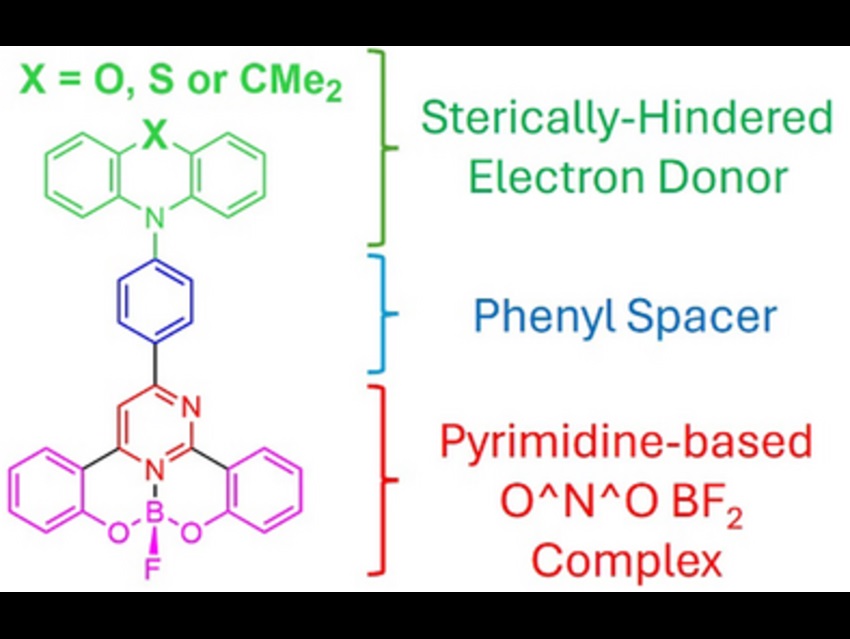The study tackles the challenge of designing efficient, purely organic materials for OLEDs (organic light-emitting diodes). Traditional OLEDs often rely on expensive and rare metals. This research aims to develop metal-free, thermally activated delayed fluorescence (TADF) materials that are both efficient and cost-effective.
The research was carried out by a team, including Amparo Navarro, Universidad de Jaén, Jaén, Spain, Julián Rodríguez-López, Universidad de Castilla-La Mancha, Ciudad Real, Spain, Julien Massue, Institut de Chimie et Procédés pour l’Energie, Strasbourg, France, Sylvain Achelle, Univ. Rennes, Rennes, France, and colleagues. The researchers synthesized a new class of four-coordinate boron complexes using pyrimidine-based O^N^O ligands, attaching electron-donating groups such as dimethylacridan, phenoxazine, and phenothiazine to fine-tune their properties.
These compounds were thoroughly studied through photophysical measurements to assess their light absorption and emission, computational modeling to understand their electronic structure, and practical testing in OLED devices.
A key feature of these materials is their ability to exhibit TADF, which allows them to convert non-emissive triplet states into light-emitting singlet states. This is made possible by a small energy gap between these states and a donor–acceptor molecular design that separates the electron-rich and electron-poor regions.
The study demonstrates the potential of these metal-free compounds as efficient and sustainable emitters for next-generation OLED technologies, which exhibit strong TADF emission and perform well in OLED devices, achieving external quantum efficiency (EQE) up to 9.7% at 5 wt% doping. Thus, the novelty of the study lies in the design of new boron-based compounds that show strong TADF properties. It paves the way for the development of more efficient and environmentally friendly OLEDs by eliminating the need for rare and expensive metals. The newly designed boron-based compounds offer flexibility in tuning light emission, making them suitable for a wide range of colors and applications. Looking ahead, future research could focus on scaling up the synthesis of these materials, improving the long-term stability of devices, and integrating these compounds into commercial OLED technologies to enhance performance and reduce production costs.
- Pyrimidine-Based Four-Coordinate O^N^O Boron Complexes: Synthesis, Photophysical and Theoretical Studies, and TADF-Based OLED Devices
Clément Diguet, Amparo Navarro, M. Paz Fernández-Liencres, Sonia B. Jiménez-Pulido, Nuria A. Illán-Cabeza, Abdullah Almutairi, Denis Tondelier, Sébastien Gauthier, Françoise Robin-le Guen, Julián Rodríguez-López, Julien Massue, Sylvain Achelle
Chem.Eur. J. 2025
https://doi.org/10.1002/chem.202501089




